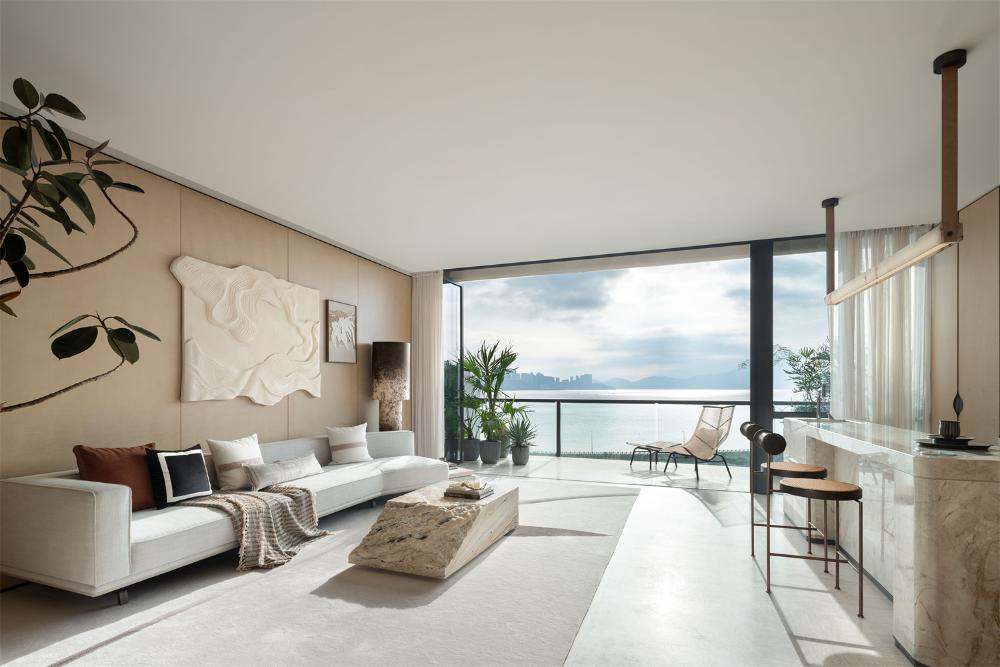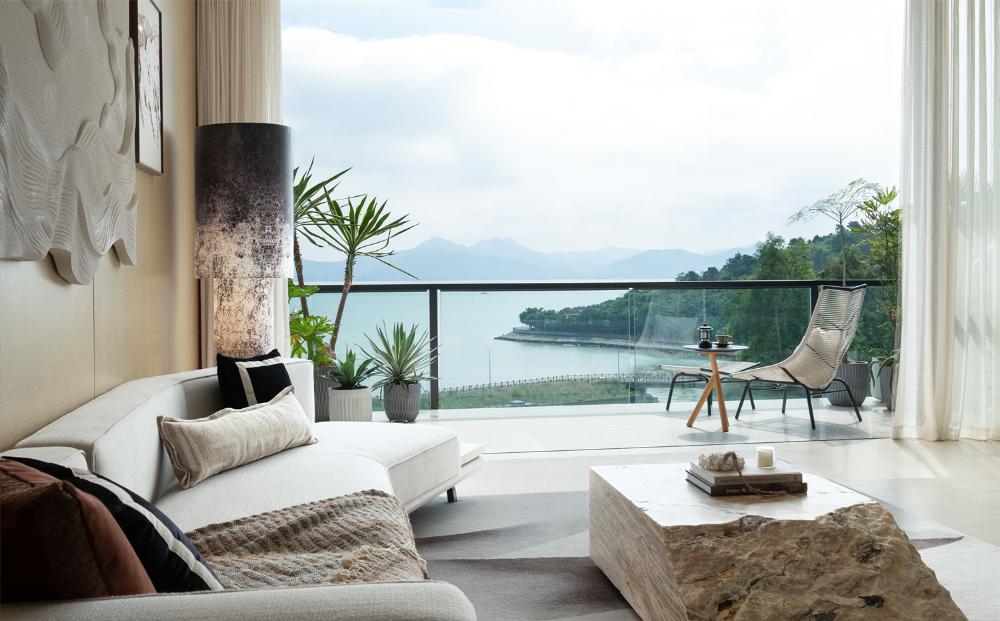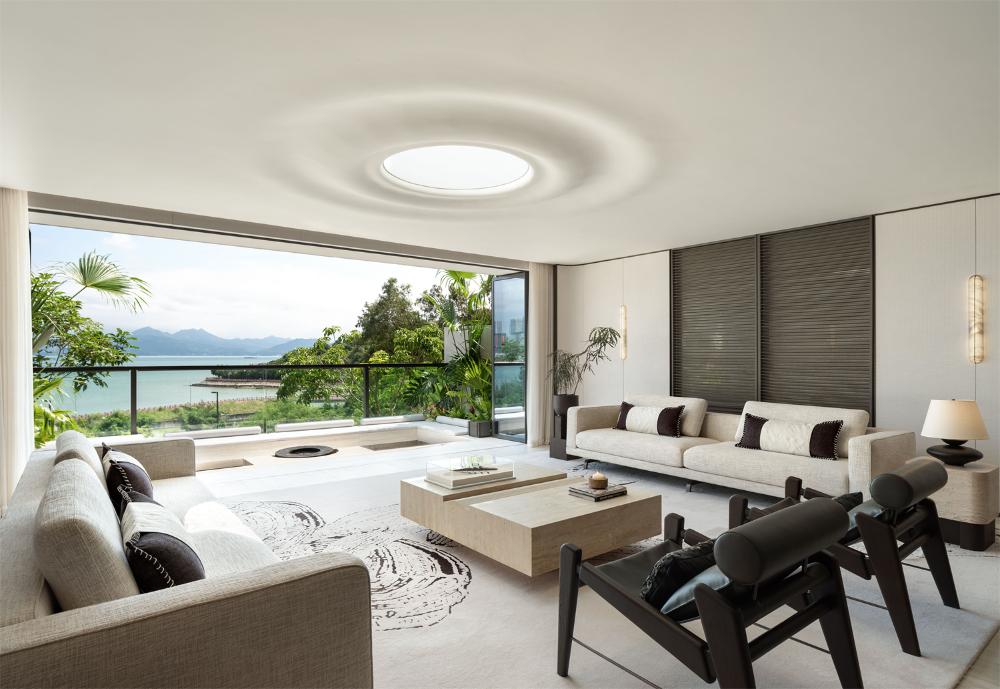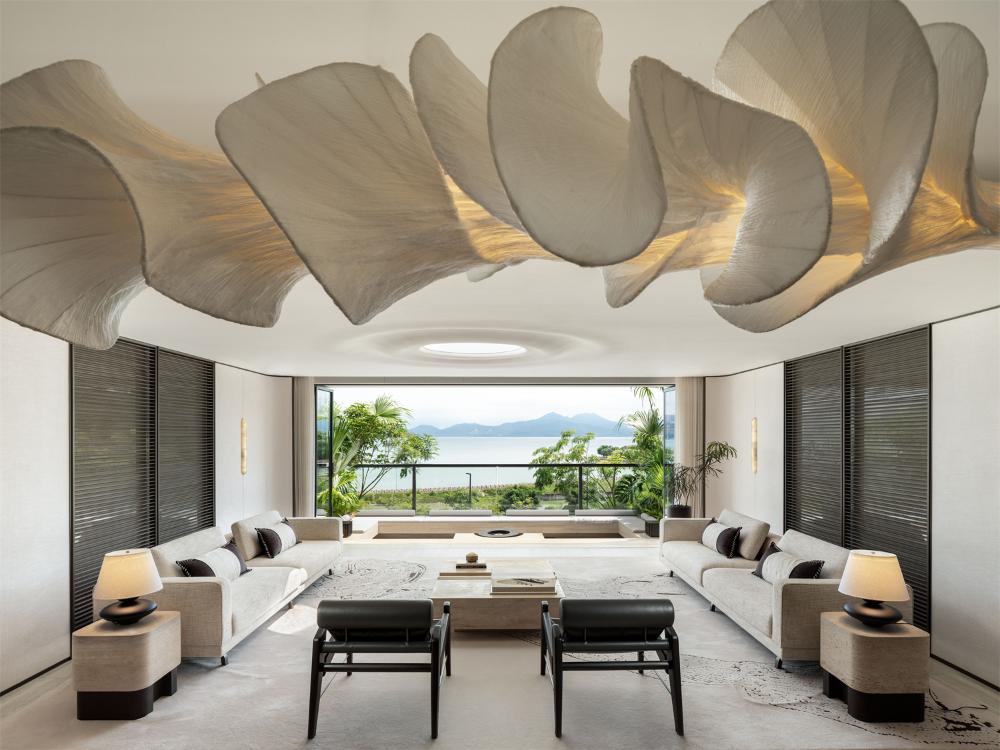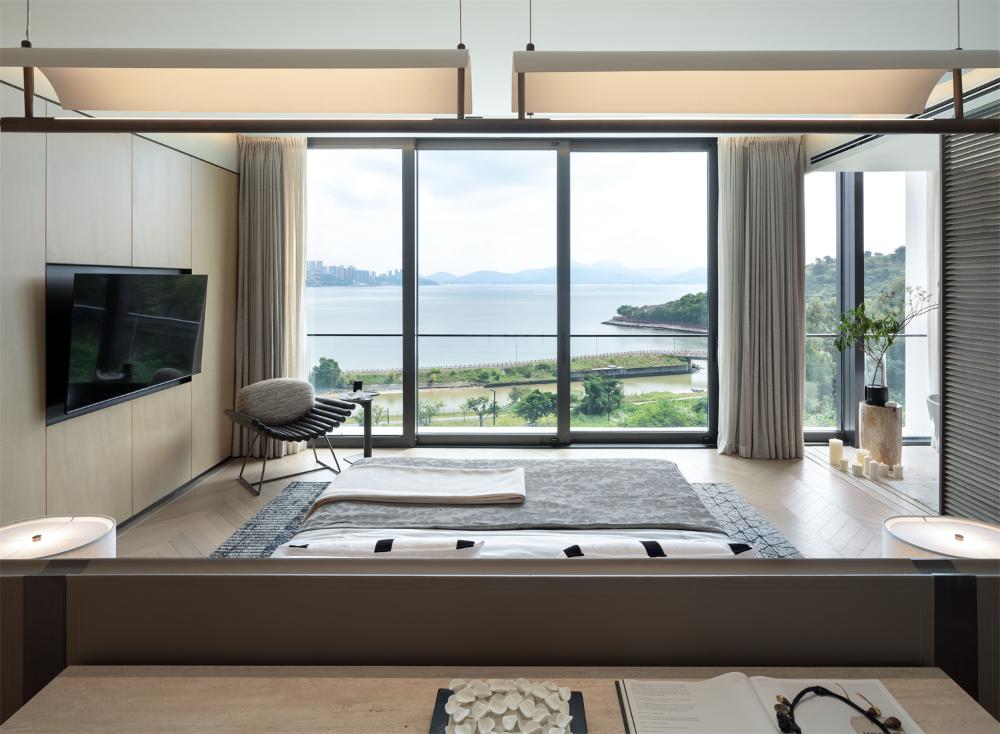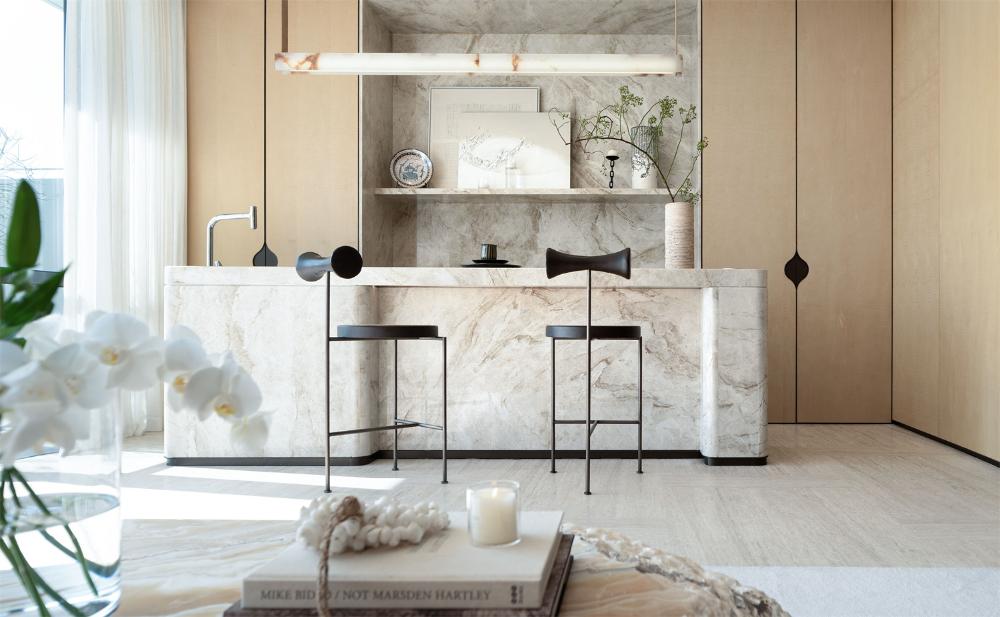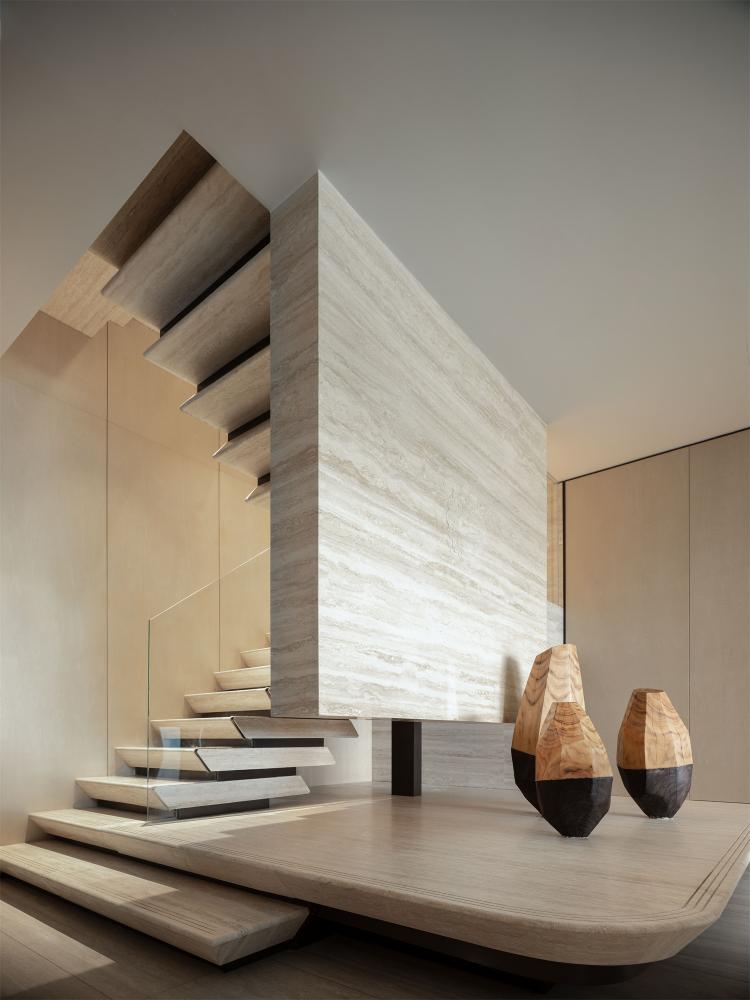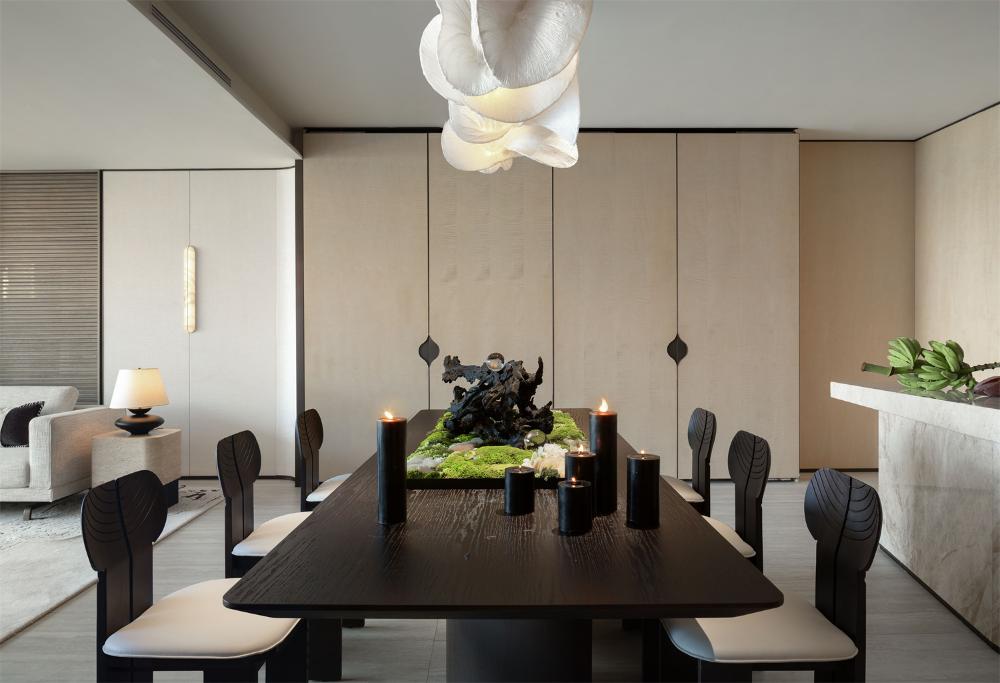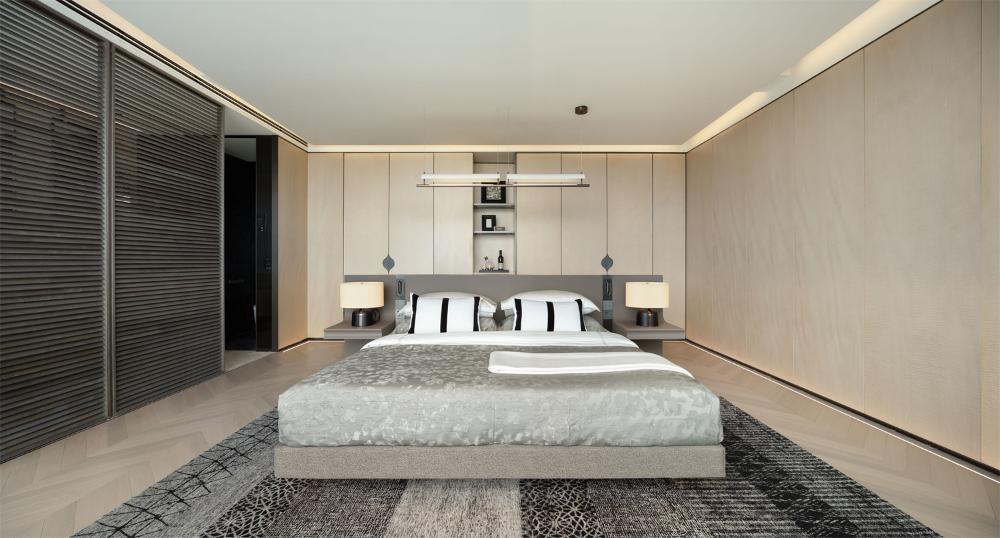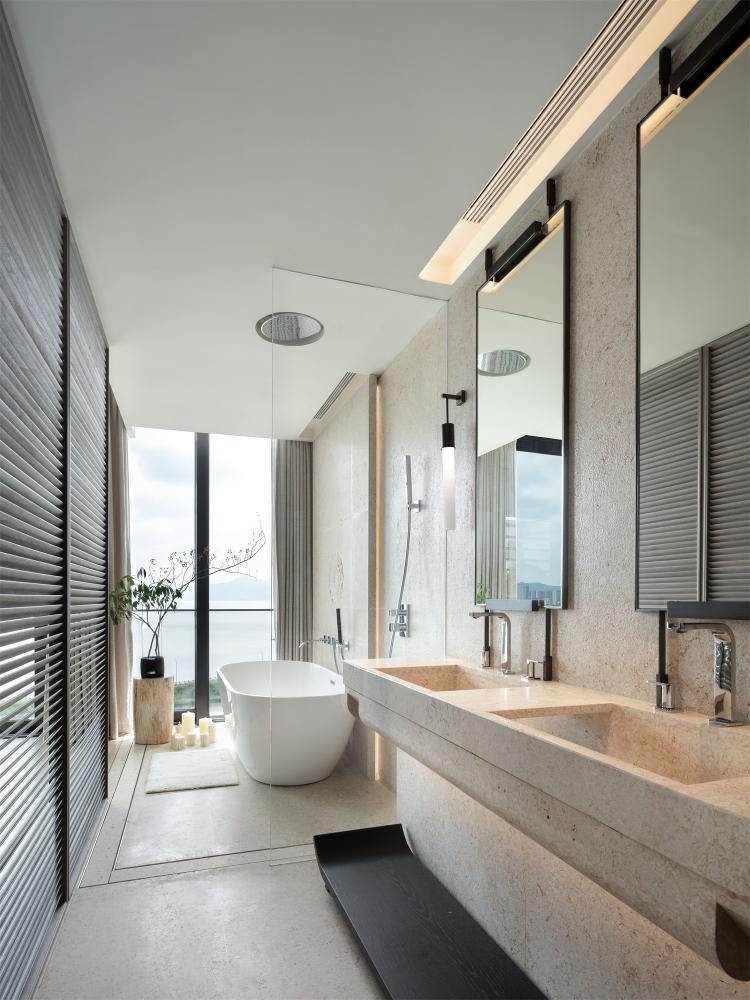Best of Showroom
Designer / Agency
- PURE DESIGN,Guo Ziwei
Category
- Showroom
Award
- 2023 SILVER
Share this project
PROJECT
DESCRIPTION
PART 1
The Second Dwelling: A Place for the Soul
Long before the term "second dwelling" became a marketing buzzword for developers, the desire for a secluded sanctuary to nourish the soul has been a timeless pursuit, transcending time and cultures.
Wang Wei, a renowned poet from ancient China, had a residence called "Lu Zhai," also known as "Wangchuan Villa." It was the first place in Chinese history referred to as a "second dwelling." In ancient times, due to the inconvenience of transportation, choosing a second dwelling often meant giving up everything that the city offered. However, with the development of transportation infrastructure, European nobility began acquiring properties in different regions for various vacation purposes. They had homes for hunting, cabins for skiing, and summer houses for escaping the heat, among others.
In today's context of gradually intensifying urban resource consolidation, an increasing number of middle-class families are choosing to establish a second residence in remote areas away from the city. Those who love mountains select locations amidst forests and hills, while those who cherish proximity to water opt for lakeside or seaside settings.
The term "second dwelling" is labeled as such based on the duration and frequency of usage. However, if we consider it from the perspective of personal preference and the soothing effect it has on one's mind and body, this so-called "second dwelling" actually takes precedence over the primary one, as it becomes the true abode of the heart.
If we consider the conventional primary residence as a "house," then we prefer to refer to the second dwelling, or the abode of the heart, as a "cottage."
A house belongs to reality. When designing a house, we primarily focus on practical aspects such as layout, clear zoning, accommodating the number of occupants, determining storage spaces, and parking arrangements—everything related to the necessities of daily living.
On the other hand, a cottage belongs to idealism. When designing a cottage, the most important aspect is whether it aligns with our personal preferences. It should allow us to escape the hustle and bustle of the city and find solace in the embrace of nature and the space itself. It should provide a sanctuary that caters to our desire for tranquility and rejuvenation.
"Brief escape from the city" emphasizes the "brief" nature of the experience. Situated less than an hour's drive from Shenzhen, Park Lane Harbour is house stretching along the coast that extend their terraces out over the sea, forming the location for this project.
As a second residence, the Pure Design thoroughly researched and explored the residential needs of different age groups for their second homes. Ultimately, the target demographic was identified as the middle-class population in the Guangdong-Shenzhen Area. These individuals are still in the prime of their careers, frequently engaged in business travel, and seeking a place that addresses their focus on family and personal rejuvenation. This determination shaped the design of this residence, which is not purely oriented towards vacationing, but rather strikes a balance between urban living and coastal leisure.
The building consists of four levels, blending into the natural topography. With the entrance located on the third level, determining the placement of each floor's functions becomes the initial premise of the design process. Organizing the modules for living, guest activities, and relaxation, as well as the allocation between active and quiet spaces, is rather crucial.
The building is divided into four levels, blending harmoniously with the natural terrain. Since the entrance is situated on the third level, determining the allocation of functions for each floor, such as living, guest activities, and relaxation areas, as well as the distribution between active and quiet spaces, becomes the fundamental premise of the design.
Pure Design made bold changes to the spatial layout based on their analysis and understanding of the architectural conditions. They carefully examined various usage scenarios, such as short weekend stays for small families, informal meetings for corporate teams, and gatherings with friends, and then repositioned the modules accordingly.
The designer aims to offer clients an experience different from urban dwellings—a world far removed from city life. This house will create memories for their children, reminiscing about their summer vacations—building sandcastles on the beach, or playing under their enormous tent.
As a temporary residence and escape from the city, the essence of the design lies in isolating it from the complexities of urban life. The house allows the sea breeze and sunlight to enter directly, creating a relaxed environment that requires minimal maintenance and doesn't rely on service personnel. Therefore, the designer simplified storage solutions or concealed them altogether. In terms of facade treatment, solid volumes were emphasized to expand the space and ensure the scale and circulation of most areas.
On the ground floor, which serves as the main guest area, the designer removed the original spatial partitions and integrated the outdoor courtyard with the guest area. The outdoor space features a design with varying heights, allowing for small-scale interactions. Together with the guest lounge and dining and kitchen areas, it creates multiple social scenes of different scales without interference.
Above the ceiling is a courtyard on the second floor, where the designer created a circular atrium with a water feature by excavating skylights. The ceiling on the first floor adopts a wavy design resembling ripples of water, forming a shape similar to a lamp directly above, effectively utilizing natural light as a "light source."
In the dining and kitchen area, a combination of rustic wooden dining table and chairs creates a relaxed atmosphere that exudes a sense of nature and simplicity.
PART 2
Material, Continuity with Surroundings
As the first space after entering the house, the third floor serves the function of living. The moment luggage is set down, children rush to the terrace or take a brief rest on the sofa, while adults can easily handle the ingredients brought from the city at the kitchen bar.
Being a house by the seaside, the designer drew inspiration for the space's materials from the surrounding environment. Elements such as the beach, the ocean, rocks, and shrubs were deconstructed into their constituent elements and applied to the materials used in the space.
The teapoy made of natural stone is cut in irregular shapes, maintaining a rough surface as if eroded by seawater. This natural and organic design element ensures the continuity with the surrounding environment throughout the space.
This is a house that doesn't need excessive brightness, especially when it is away from urban light pollution, allowing one to truly experience the natural transitions of day and night, with the rising and setting of the moon and sun.
As night falls, everything in the space becomes calm and introspective. There are no blaring horns, only the continuous sound of waves crashing against the shore.
PART 3
Resting physically, Equally Important as resting for the Soul
The place of dwelling, besides providing solace for the soul, must also comfortably accommodate the body. As a haven for repose, the master bedroom occupies the entire top floor of the building, ensuring both spaciousness and privacy.
The designer aimed to create a space reminiscent of a hotel suite, maintaining the continuity of materials and ambiance throughout the entire space, eschewing extravagant shapes and decorations in favor of a serene and inclusive atmosphere.
The furnishings in the space are streamlined to the essentials, and every item present is akin to an art installation, serving as a highlight within the space.
Each window is carefully positioned to frame the ultimate view, creating a harmonious interplay between the inside and outside, where artistry comes to life. As night falls, the sounds of insects chirping and waves crashing become a lullaby of nature, accompanying one's slumber with the rhythmic breathing of the sea.
Just as all living things have their inherent growth "momentum," the architecture seamlessly integrates into nature, with tall trees gracefully entering the courtyard on the second floor, swaying with the wind and casting their own shadows within the space.
The objects in the space also benefit from the large windows, as the play of light creates intriguing shadows, adding a touch of luminous delineation to the materials.
On the second floor, designed as an entertainment area within the residence, there are designated spaces for collections, appreciation, and audiovisual enjoyment, ensuring that every family member can find their own place within it.
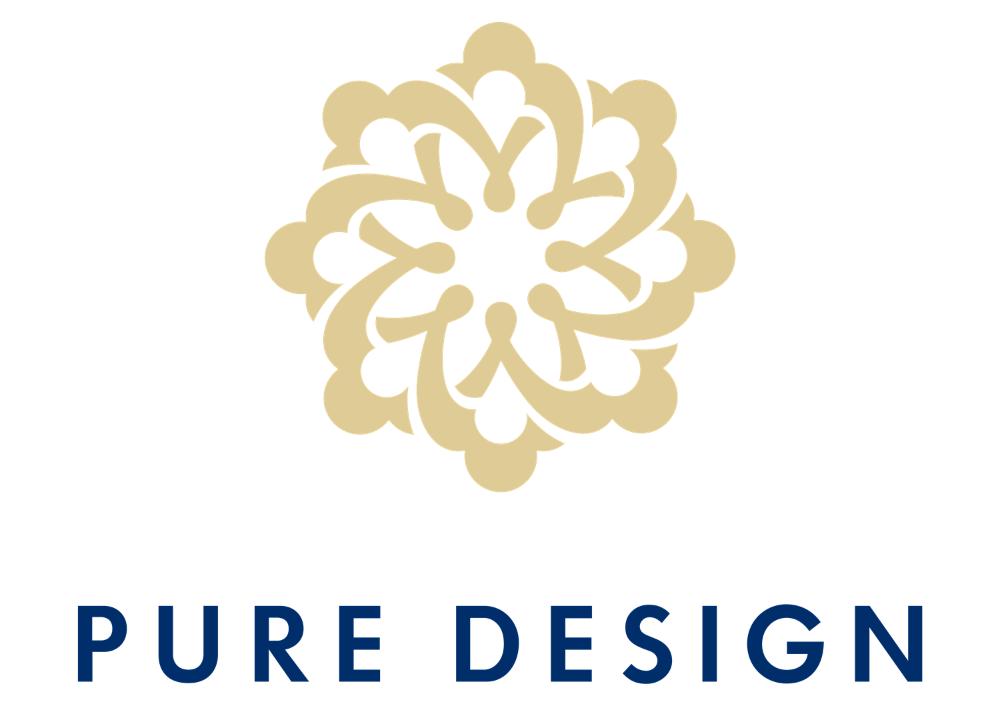
Agency:PURE DESIGN
PURE DESIGN was founded in Shenzhen by the renowned designer Guo Ziwei.
Since its establishment, PURE DESIGN has always been adhering to the spirit of innovation, focusing on fine interior design, pioneering in the field of hotel clubs, marketing centers, luxury villas, finishing showrooms, and other design fields, and striving to propose the best solutions for the owners in design and engineering. PURE DESIGN has an experienced first-class design team and a perfect and advanced partnership system and design management system. With a stable team and professional execution, PURE DESIGN combines design creativity with project practice to provide customers with a high-quality service guarantee. Works of PURE DESIGN have won many domestic and international design awards.
By insisting on “rational exploration and sensual construction” in the design as well as pursuing the balance of commercial and artistic moderation in the project, PURE DESIGN responds to the natural and inner touch with design, making the pursuit of quality and spiritual design become a stream of force, and making every square be correctly treated.
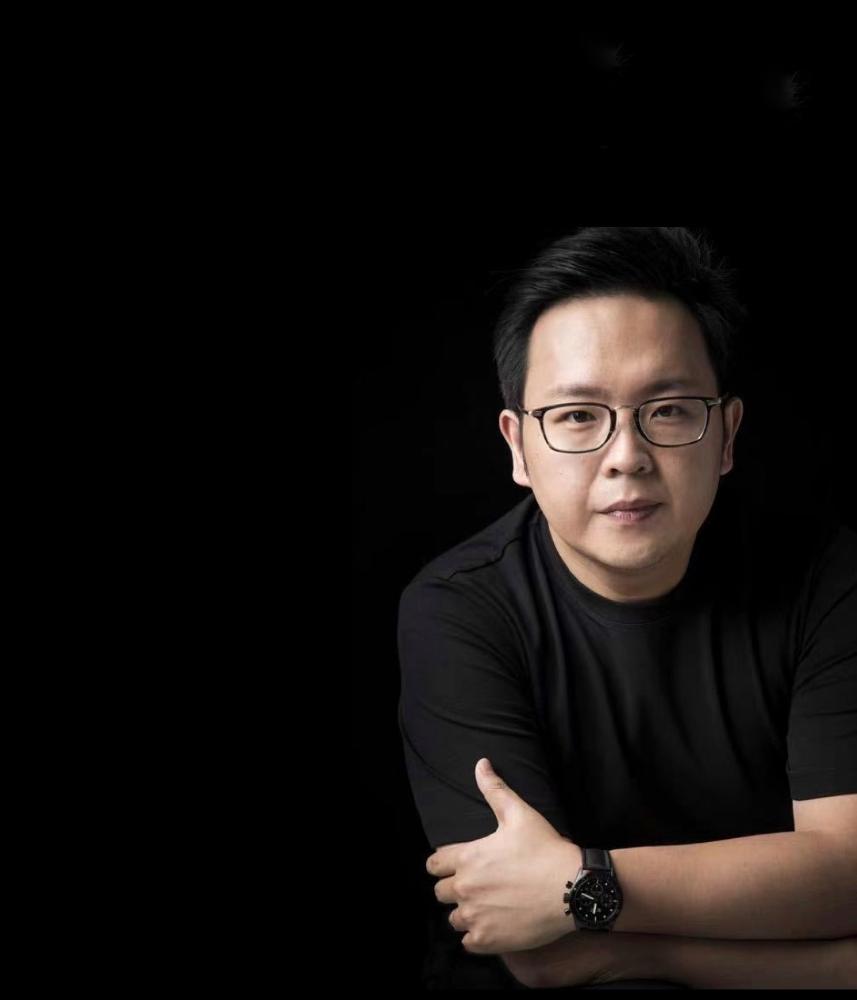
Designer:Guo Ziwei

